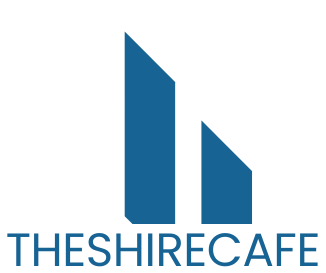Navigating the world of home financing can be daunting, but the FHA streamline refinance offers a straightforward solution for homeowners looking to lower their mortgage payments. This unique program is designed specifically for those with existing FHA loans, allowing them to refinance without the usual extensive documentation and credit checks.
With interest rates constantly fluctuating, many homeowners are eager to take advantage of potential savings. The FHA streamline refinance not only simplifies the process but also helps borrowers tap into lower rates more easily. Understanding how this program works can empower homeowners to make informed decisions about their financial future.
Table of Contents
ToggleOverview of FHA Streamline Refinance
FHA streamline refinance offers an efficient option for homeowners with existing FHA loans to lower their mortgage payments. This program simplifies the refinancing process, facilitating access to potential savings.
What Is FHA Streamline Refinance?
FHA streamline refinance is a program designed for homeowners with FHA-insured loans who seek to refinance with minimal documentation. It allows for a quicker process compared to traditional refinancing options. Key aspects include no appraisal requirement and leniency on credit verification. Borrowers can streamline their mortgages to take advantage of lower interest rates without significant financial hurdles.
Key Benefits of FHA Streamline Refinance
- Reduced Documentation: Streamline refinancing requires less paperwork, simplifying the borrowing process.
- No Appraisal Needed: This eliminates the need for property valuations, speeding up transactions.
- Lower Interest Rates: Borrowers can take advantage of current lower rates, decreasing monthly payments.
- Flexible Credit Guidelines: Updated credit requirements may accommodate borrowers with less-than-perfect credit scores.
- Quick Processing: Shortened processing times mean homeowners can see benefits faster.
- No Out-of-Pocket Costs: Many borrowers can include closing costs in their new mortgage, avoiding upfront payments.
Eligibility Requirements

The FHA streamline refinance program has specific eligibility criteria. Understanding these requirements helps borrowers determine their eligibility.
Borrower Qualifications
Borrowers must meet certain criteria to qualify for FHA streamline refinancing:
- Existing FHA Loan: The borrower must currently hold an FHA-insured mortgage.
- Good Payment History: A minimum of 6 months of on-time payments is necessary, with no more than one late payment in the past 12 months.
- Occupancy: The property must remain the borrower’s primary residence, ensuring the refinance directly benefits the homeowner.
- Debt-to-Income Ratio: Lenders often require a debt-to-income ratio of 43% or lower, ensuring borrowers can manage additional financial obligations.
- Credit Score: While no minimum credit score exists, borrowers with scores below 580 may face challenges with some lenders.
Property Requirements
- Type of Property: The property must be a single-family home, a condominium approved by the FHA, or a manufactured home that meets HUD standards.
- FHA Insured: The original mortgage must be FHA-insured, maintaining the continuity of FHA backing.
- Primary Residence: The home must serve as the borrower’s primary residence, not a rental or investment property.
- No Significant Changes: No significant changes can occur to the property’s zoning or condition since the original mortgage, ensuring borrower protection and housing stability.
Application Process
The application process for an FHA streamline refinance is straightforward, designed to streamline refinancing for eligible homeowners. Understanding the steps involved ensures a smooth experience.
Steps to Apply for FHA Streamline Refinance
- Contact a Lender: Homeowners should reach out to an FHA-approved lender to discuss refinancing options. Lenders provide details about rates, terms, and eligibility.
- Pre-qualify for the Program: Lenders evaluate borrowers’ financial situations through a pre-qualification process. This assessment includes reviewing mortgage history, payment records, and debt-to-income ratios.
- Submit the Application: After pre-qualification, borrowers formally apply for the FHA streamline refinance. The application typically includes basic personal and financial information.
- Lender Review: The lender reviews the application and supporting documents, ensuring the borrower meets eligibility criteria. Decisions commonly occur within days.
- Loan Processing and Approval: Upon approval, the lender processes the loan using streamlined procedures, often eliminating the need for an appraisal.
- Closing: Once processed, the closing occurs, where the new mortgage terms are finalized, and any closing costs can be incorporated into the loan amount.
Required Documentation
Borrowers must present specific documents during the application process. Requirements include:
- Loan Information: Current mortgage statement detailing the existing loan and terms.
- Income Verification: Recent pay stubs or tax returns to confirm income levels.
- Employment History: Documentation to validate stable employment, usually covering the last two years.
- Identification: A government-issued ID, such as a driver’s license or passport.
- Debt Information: Details of all outstanding debts, providing a clear view of the borrower’s financial obligations.
These documents assist lenders in making informed decisions while expediting the streamline refinance process.
Costs and Fees
Understanding the costs and fees associated with the FHA streamline refinance is crucial for homeowners. These expenses can significantly affect overall savings and financial decisions.
Upfront Mortgage Insurance Premium (UFMIP)
The FHA requires an Upfront Mortgage Insurance Premium (UFMIP) for all FHA loans. As of 2023, the UFMIP is 1.75% of the loan amount, which can be rolled into the new mortgage, allowing homeowners to avoid immediate out-of-pocket expenses. This fee helps protect lenders in case of default and is a standard part of the FHA loan structure. Borrowers refinancing through the FHA streamline program will still incur this cost, which is applicable even if previously paid on the original loan.
Monthly Mortgage Insurance Premium (MIP)
All FHA loans, including streamline refinances, require a Monthly Mortgage Insurance Premium (MIP). The MIP amount depends on various factors, including the loan term and the loan-to-value (LTV) ratio. For loans with terms exceeding 15 years and LTV ratios greater than 95%, the MIP is currently 0.85% annually. For those with LTV ratios at or below 95%, the MIP is typically 0.80% annually. This recurring fee ensures ongoing insurance coverage for the lender and is essential for maintaining FHA loan eligibility. Homeowners need to account for this monthly cost in their budgeting for the refinance.
Pros and Cons
Considering the FHA streamline refinance involves weighing its advantages against potential disadvantages. Both aspects play crucial roles in a homeowner’s decision-making process regarding this program.
Advantages of FHA Streamline Refinance
- Reduced Documentation: Simplified application requirements minimize paperwork, promoting a swift refinancing experience. Borrowers encounter less hassle during the process, leading to quicker approvals.
- Lower Interest Rates: Favorable interest rates help homeowners save money on monthly mortgage payments. The program allows borrowers to take advantage of favorable market conditions.
- No Appraisal Required: Eliminating the need for a home appraisal accelerates the refinancing timeline. This feature lowers costs and enhances the borrower’s experience.
- Flexible Credit Guidelines: Leniency in credit score criteria enables more borrowers to qualify. Those with less-than-perfect credit may still access the benefits of refinancing.
- Quick Processing Times: Streamlined procedures expedite loan processing, resulting in shorter closing times. Homeowners can realize savings sooner while enjoying their new mortgage terms.
- Inclusion of Closing Costs: Borrowers can roll closing costs into the new mortgage. This feature reduces upfront expenses, making refinancing accessible for more homeowners.
Disadvantages of FHA Streamline Refinance
- Mortgage Insurance Costs: The requirement for upfront and monthly mortgage insurance premiums can offset potential savings. Borrowers need to account for these additional costs in their financial planning.
- Limited Eligibility: Strict eligibility criteria restrict participation in the program. Only homeowners with existing FHA-insured loans may qualify, limiting options for others.
- Potential for Higher Loan Amounts: Rolling closing costs into the new mortgage increases the overall loan amount. This adjustment may lead to higher interest costs over time, affecting long-term savings.
- Potential Loss of Equity: When refinancing, some homeowners may lose a portion of their home equity due to increased mortgage balance. Assessing equity implications is critical before proceeding.
- Not Suitable for All Situations: FHA streamline refinancing may not always be appropriate for every borrower’s financial situation. Homeowners must evaluate their specific circumstances and compare other refinancing options.
Taking advantage of the FHA streamline refinance can lead to significant savings for eligible homeowners. With its simplified process and reduced requirements, this program offers a valuable opportunity to lower monthly payments and improve financial situations.
By understanding the eligibility criteria and associated costs, borrowers can make informed decisions that align with their financial goals. While there are pros and cons to consider, the benefits of lower interest rates and quicker processing times often outweigh the drawbacks.
Homeowners should assess their unique circumstances and explore this option to determine if it’s the right fit for them. The FHA streamline refinance could be a smart step toward achieving greater financial stability.



